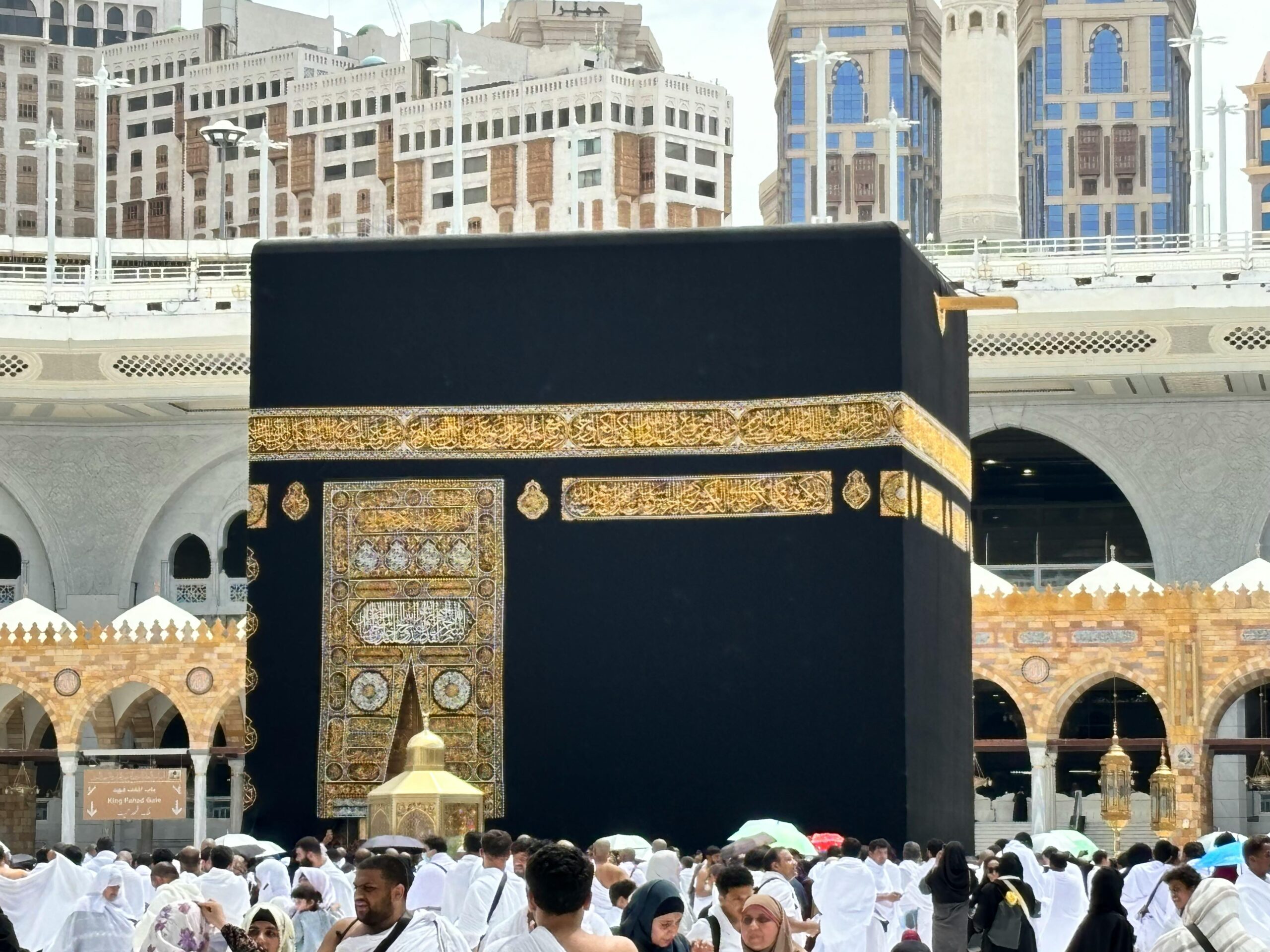Hajj consists of several specific rites, each holding profound spiritual significance. Here is a detailed description of the stages of Hajj.
Ihram
Ihram marks the beginning of Hajj. Pilgrims enter a state of ritual purity by wearing specific garments: two pieces of unstitched white cloth for men, symbolizing equality and humility, and modest clothing for women.
Rite of Ihram: Pilgrims purify themselves with a ritual bath (ghusl) and perform two units of prayer (raka’ats) before donning the Ihram clothing. They then recite the Talbiyah: “Labbayk Allahumma Labbayk” (Here I am, O Allah, here I am).
Tawaf
Tawaf involves circumambulating around the Kaaba, located at the heart of the sacred mosque in Mecca. Pilgrims perform seven rounds in a counterclockwise direction.
Significance of Tawaf: This ritual symbolizes the unity of believers in the worship of One God and their total devotion to Allah (SWT). Each round around the Kaaba represents a part of the universe revolving around the Creator.
Sa’i
After Tawaf, pilgrims perform Sa’i, which involves walking rapidly seven times between the hills of Safa and Marwah. This rite commemorates Hajar’s desperate search for water for her son Isma’il.
Significance of Sa’i: This ritual symbolizes patience, perseverance, and faith in Allah (SWT), reminding of Hajar’s trial and the Divine mercy manifested through the Zamzam well.
Arafat
The Day of Arafat is the pinnacle of Hajj. Pilgrims gather on Mount Arafat for a day of prayer, repentance, and reflection.
Significance of the Day of Arafat: This day is often considered a foretaste of the Day of Judgment. Pilgrims pray intensely for forgiveness and mercy from Allah, making it a moment of profound spiritual purification.
Muzdalifah
After sunset at Arafat, pilgrims head to Muzdalifah to spend the night under the stars. They pray, meditate, and collect pebbles for the stoning ritual.
Significance of Muzdalifah: The night spent in Muzdalifah is a time for prayer and rest under the night sky, reminding pilgrims of their equality before Allah (SWT).
Rami al-Jamarat
Rami al-Jamarat involves throwing pebbles at three pillars symbolizing Satan, recalling Ibrahim’s (Abraham’s) obedience to Allah.
Significance of Rami al-Jamarat: This ritual symbolizes the rejection of evil and temptation. By throwing the pebbles, pilgrims renew their commitment to follow the path of Allah.
Tawaf al-Ifadah
Tawaf al-Ifadah is another circumambulation around the Kaaba, marking the end of the major rites of Hajj. This ritual is usually performed after the animal sacrifice.
Significance of Tawaf al-Ifadah: This step represents purification and spiritual rebirth. Pilgrims also celebrate Eid al-Adha, commemorating the sacrifice of Ibrahim.
Performing Hajj is a major step in a Muslim’s spiritual life, a unique opportunity for purification and renewal. By understanding the essential stages of Hajj and preparing adequately, you can experience this journey with an open heart and strengthened faith.


